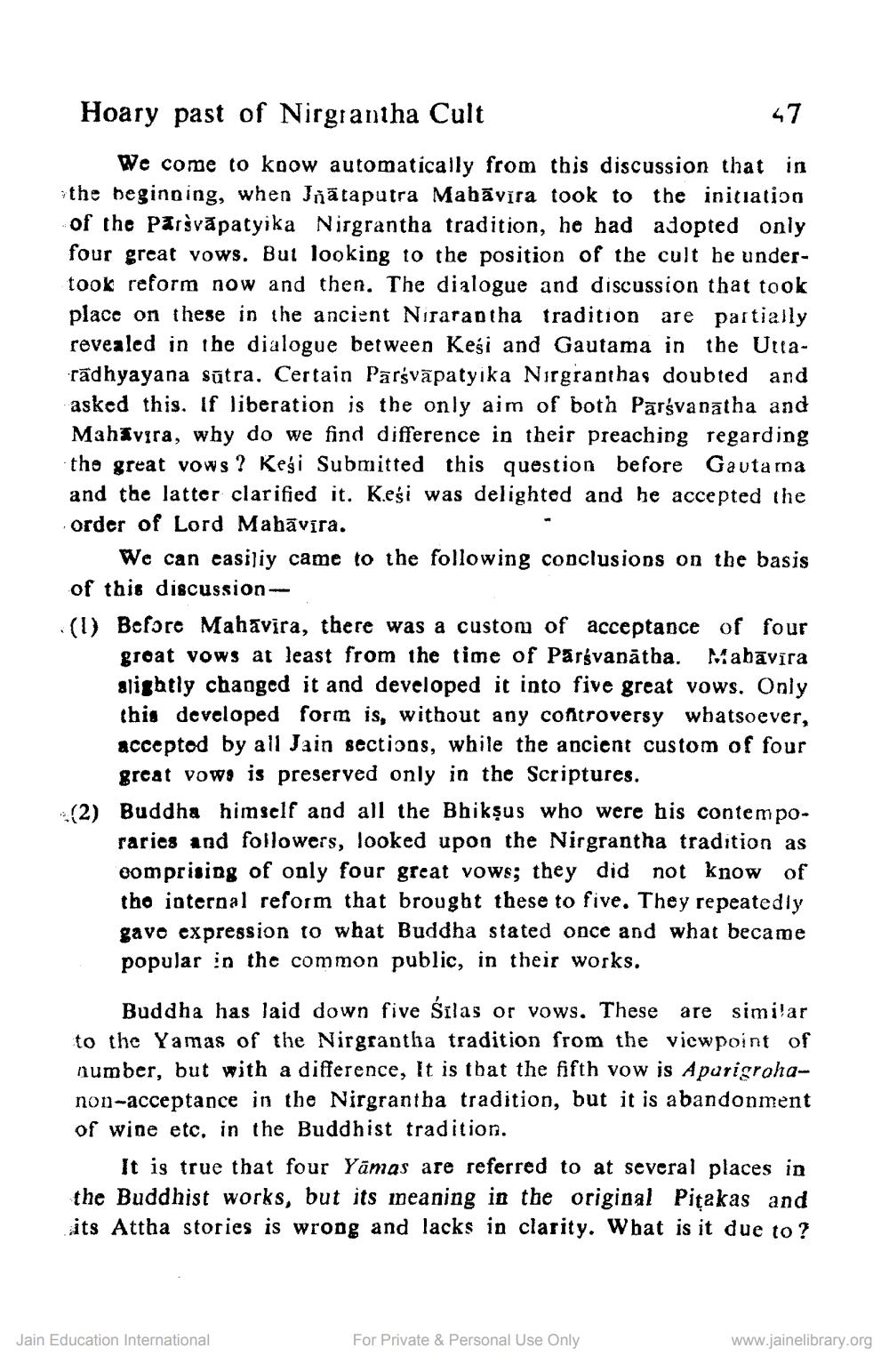________________
7
Hoary past of Nirgiantha Cult
<
We come to koow automatically from this discussion that in the beginning, when Jnātaputra Mabā vīra took to the initiation of the Paršvāpatyika Nirgrantha tradition, he had adopted only four great vows. But looking to the position of the cult be undertook reform now and then. The dialogue and discussion that took place on these in the ancient Niraraptha tradition are partially revealed in the dialogue between Kesi and Gautama in the Uttarādhyayana sūtra. Certain Pārsvāpatyika Nirgranthas doubted and asked this. If liberation is the only aim of both Parsvanatha and Mahivira, why do we find difference in their preaching regarding the great vows? Kesi Submitted this question before Gautarna and the latter clarified it. Kesi was delighted and he accepted the order of Lord Mabāvīra.
We can easiliy came to the following conclusions on the basis of this discussion(1) Beföre Mahavira, there was a custom of acceptance of four
groat vows at least from the time of Parsvanatba. Mahāvīra slightly changed it and developed it into five great vows. Only this developed form is, without any controversy whatsoever, acceptod by all Jain sections, while the ancient custom of four
great vows is preserved only in the Scriptures. (2) Buddha himself and all the Bhikşus who were his contempo.
raries and followers, looked upon the Nirgrantha tradition as comprising of only four great vows; they did not know of the internal reform that brought these to five. They repeatedly
expression to what Buddha stated once and what became popular in the common public, in their works.
Buddha has laid down five Śílas or vows. These are similar to the Yamas of the Nirgraptha tradition from the viewpoint of number, but with a difference, It is that the fifth vow is Aparigrohanon-acceptance in the Nirgrantha tradition, but it is abandonment of wine etc. in the Buddhist tradition.
It is true that four Yāmas are referred to at several places in the Buddhist works, but its meaning in the original Pitakas and its Attha stories is wrong and lacks in clarity. Wbat is it due to?
Jain Education International
For Private & Personal Use Only
www.jainelibrary.org




